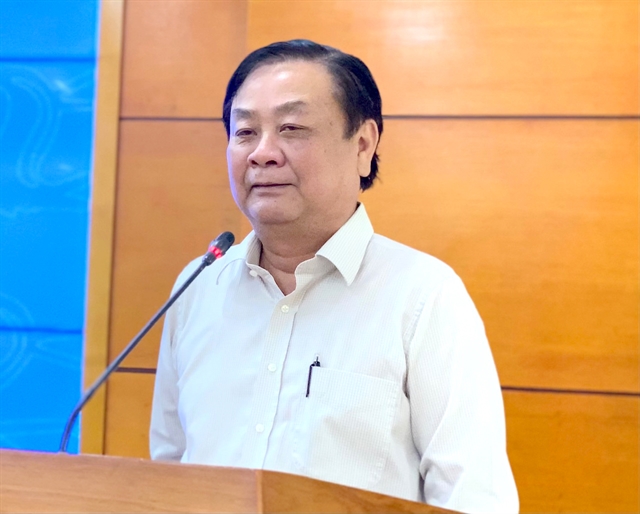 Opinion
Opinion

Minister of Agriculture and Rural Development Lê Minh Hoan talks to the Government Portal about the consumption of lychee and other agricultural products during the pandemic

|
| Minister of Agriculture and Rural Development Lê Minh Hoan. Photo baochinhphu.vn |
Minister of Agriculture and Rural Development Lê Minh Hoan talks to the Government Portal about the consumption of lychee and other agricultural products during the pandemic
The participation of ministries and sectors in the programme 'Promoting agricultural product consumption - sharing love to overcome the COVID-19 pandemic' has helped many agricultural products be consumed during the pandemic. What does this experience tell us about agricultural product consumption in the future?
The example of promoting the consumption of Bắc Giang lychee is a suggestion for us to think about the direction of development and consumption of agricultural products in the future. Promoting lychee consumption in Bắc Giang is not a matter of how many tonnes of lychee can be consumed, but the important thing is what can be learned and what model brings sustainable value in the consumption of agricultural products. The Ministry of Agriculture and Rural Development will work with ministries, sectors, associations and organisations to review the programme, considering it a scenario for us to regularly respond to fluctuations in the market.
Even if there is no market volatility, from this model, we will create a consumption smoothness with a new idea to activate a whole system to connect information and data from the supply sources to the consumers. Once there is transparent data information and multi-dimensional analysis information, with the participation of the producers in localities, the Ministry of Agriculture and Rural Development and the central system of distribution of agricultural products, we will have a more transparent picture for producers to understand the market's needs in terms of output, standards and how to distribute and circulate products.
Once consumers know the origin of agricultural products and trade centres know the raw material areas, we will not have to wait until harvest time to think about distribution. Such things can be prepared in advance.
Another thing is that we need to recalculate the seasonal calendar so as not to coincide with the countries we export to. There needs to be an information system map that can deal with seasonal calendars and provide farmers with production, output and supply information.
The Ministry of Agriculture and Rural Development has also considered the problem of transforming the growth model in agriculture towards a circular economy adapted to climate change. Can you provide more information on this issue?
Our agriculture is a high-yield, high-priced agriculture, but the cost is also very high. In doing business, we can't just depend on output or revenue, but must calculate profit.
Therefore, we must create new thinking by activating the whole system through the connection of supply and demand information. When we are connected and have transparent and multi-dimensional data, from domestic producers and distributors to management units, we will have a more transparent picture.
It is necessary to shift the mindset from agricultural production to an agricultural economy. Current agricultural production value often grows due to increased productivity, which proves our production capacity is currently very good.
However, does an increase in output mean an increase in value? Will farmers still have enough energy to reinvest and reproduce in the current increasing input situation? For example, the price of winter-spring rice is good, but in May, the price of rice tends to decrease. Although many kinds of vegetables and fruits are tough to export, despite their good quality, their prices have decreased, while fertiliser and animal feed prices have increased sharply.
What solutions will the Ministry of Agriculture and Rural Development prioritise to ensure the consumption of agricultural products?
We have achieved positive results in the first six months of 2021. In the near future, it is necessary to take advantage of opportunities from free trade agreements to remove barriers and penetrate new markets. We need to solve technical difficulties and facilitate customs clearance and logistics infrastructure. It’s also essential to expand the agricultural product market to economies such as Japan, South Korea, India, the European Union and the Middle East.
It is necessary to promote the consumption of agricultural products in the domestic market, promptly consume the agricultural products of farmers and overcome the situation of product surpluses and decreases in prices, which have been causing damage to producers. We also need to work with localities to develop plans to support the timely consumption of agricultural products and coordinate in organising the purchase of agricultural products and promoting the consumption of agricultural products in large supermarket chains and systems.
It’s important that we focus on developing and applying high technology and digital transformation, while also developing e-commerce and helping enterprises distribute goods on e-commerce platforms. VNS




